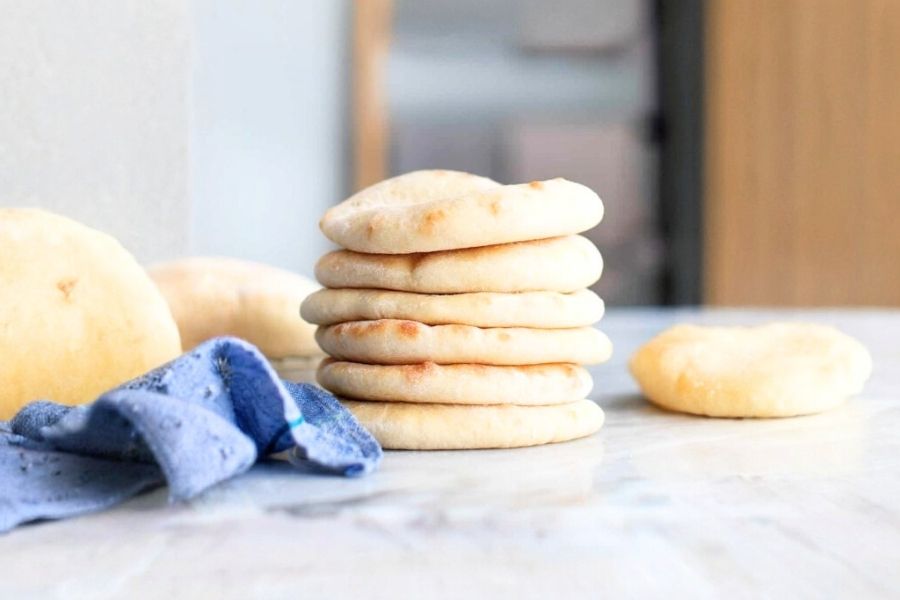Activate the Yeast: In a medium-sized bowl, stir the warm water, yeast, and 1 teaspoon sugar until dissolved. Let the mixture sit undisturbed for 5–10 minutes, or until it becomes foamy on top. This indicates your yeast is active and ready to use.
Combine Dry Ingredients: In a large mixing bowl (or stand mixer bowl), whisk together the flour, salt, and remaining tablespoon of sugar. This ensures the salt and sugar are evenly distributed before adding wet ingredients.
Form the Dough: Pour the activated yeast mixture, olive oil, and Greek yogurt into the dry ingredients. Mix with a spatula or paddle attachment until a shaggy dough forms. Switch to a dough hook or knead by hand on a floured surface for 7–10 minutes, adding a sprinkle of flour as needed until the dough feels soft, slightly tacky, and elastic.
First Rise (Bulk Fermentation): Transfer the dough into a lightly oiled bowl, turning it once to coat all sides with oil. Cover with a clean kitchen towel or plastic wrap and let it rise in a warm, draft-free place for about 2 hours, or until it doubles in size.
Portion and Rest: Punch down the risen dough to release air. Turn it out onto a floured surface and divide it into 12 equal pieces (a kitchen scale helps with even sizes). Shape each piece into a smooth ball. Cover loosely with a towel and let them rest for 20 minutes to relax the gluten, making rolling easier.
Roll Out the Pitas: Using a rolling pin, flatten each dough ball into a circle about ¼ to ½ inch thick. Dust lightly with flour to prevent sticking. Try to keep the thickness even for consistent puffing during baking.
Bake to Perfection: Preheat your oven to 500°F (260°C) and line two baking sheets with parchment paper. Arrange dough circles about an inch apart on the sheets. Bake one tray at a time for 5–8 minutes, checking after 5 minutes. Rotate the pan halfway through if needed. The pitas are ready when they puff up and turn light golden on top.
Cool and Serve: Transfer baked pitas immediately to a wire rack to cool slightly. Serve warm or store for later use. These breads are perfect for dipping, stuffing, or enjoying plain.
